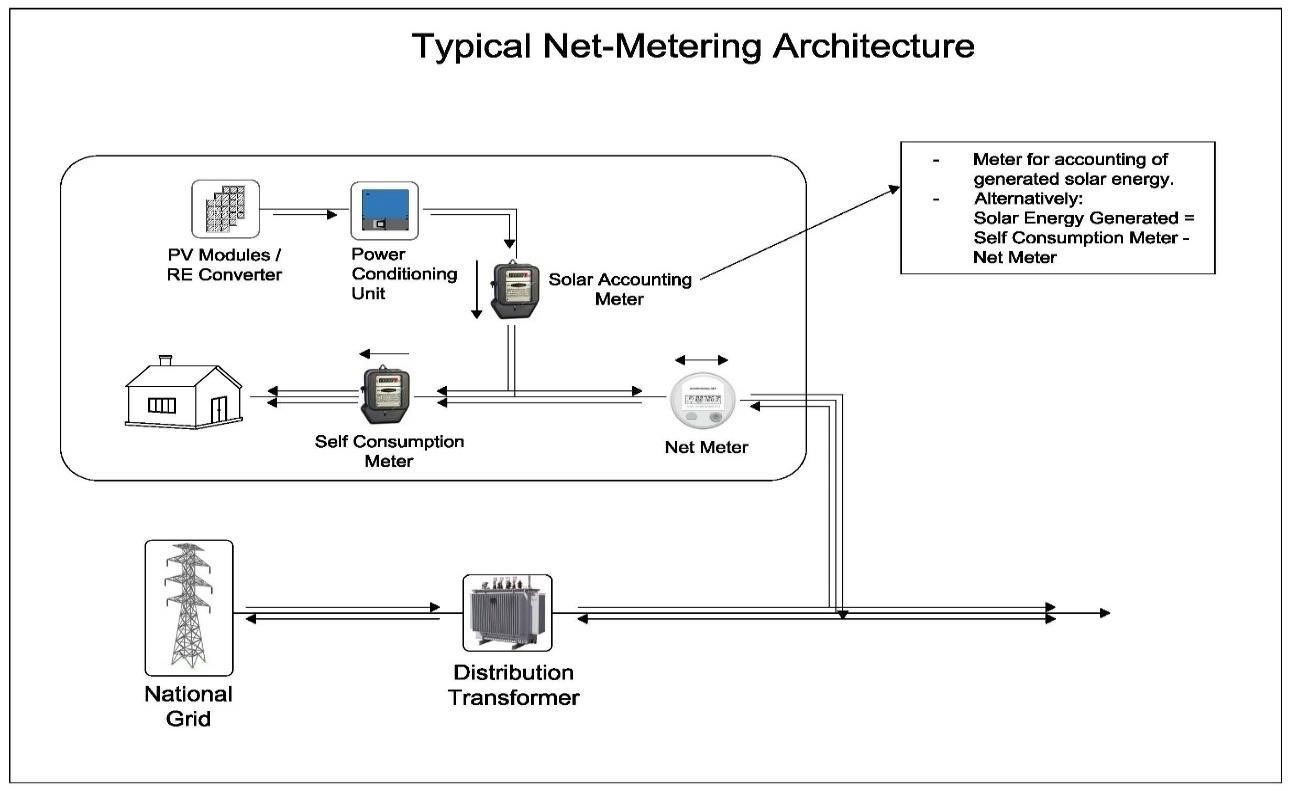 How net energy metering works in Bangladesh
How net energy metering works in Bangladesh
Net energy metering (NEM) refers to a policy mechanism that allows prosumers to connect their renewable energy systems to the distribution grid. The mechanism allows for the export of energy (e.g. electricity) generated from distributed renewable energy sources in exchange of credits in the form of energy or money. This method of sharing energy is often termed as ‘energy banking’.
From a practical standpoint, Net metering solar System allows the consumer to install a bi-directional meter that can measure electricity flow in two directions – from the utility to the customer (import) and from customer to the utility (export). The measured data can be stored in the meter or transferred to a centralized aggregator service. The customer’s bill is calculated according to the net energy recorded on the meter; i.e. the aggregated energy drawn from the network minus the energy delivered to the network over the specified billing period. Any credits earned (in terms of kWh) by the net generating consumers are allowed to roll over to the next billing period. By the end of the specified rolling cycle or settlement period, the consumer is either charged or compensated for the net electricity import or export respectively. Figure 1 illustrates the architecture of a typical net metering arrangement using solar PV as an example of distributed renewable energy system.
The rate at which the customer is billed is determined considering various factors such as the consumer tariff class, type of renewable energy technology, installed capacity and export limitations. While installing such connections, the prosumer must also abide by the interconnection technical requirements and safety regulations set by the concerned authority.
The interconnection process, the mechanism by which net metered distributed energy systems may be legally and safely connected to the electricity grid, is critical to the success of net metering solar programs. Interconnection standards are typically outlined separately from net metering policy parameters, but are fundamental to the development of the NEM policy. There exist three commonly-used mechanisms for compensating prosumers for local distributed generation; they are: “net energy metering”, “feed-in-tariff” and “power purchase agreement”. To avoid confusion, these three mechanisms are defined as follows.
Feed-in-tariff (FIT): FiT is introduced to encourage distributed generation by compensating the consumer using a tariff above the retail level. The tariff can be time-dependent and reduces to the retail level as the number of FIT users increases. It is usual for FiT to be implemented as the first policy measure to kickstart distributed generation.
Net energy metering (NEM): Net metering or net energy metering, on the other hand, is set at the retail tariff level. NEM is not technically a compensation, although it may become one if payments for excess generation are allowed.
Power purchase agreement: PPA tariff is generally below retail tariff rate and can be above retail depending upon the policy of the government.

You May Also Check Rooftop solar system Company in Bangladesh
